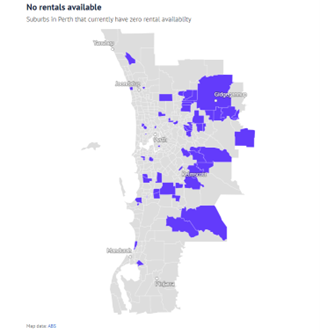
Perth’s Housing Crisis and Some Immediate Solutions
8 April 2023
Perth is facing the biggest housing shortage in the country over the next five years. The National Housing Finance and Investment Corporation report highlights a shortage of more than 25,000 homes in Perth by 2026 – which is bigger than the shortage faced by any other city. WA alone was identified as requiring over 25,000 dwellings — nearly a quarter of the entire national shortfall even though we are only about 10 percent of Australia’s population.
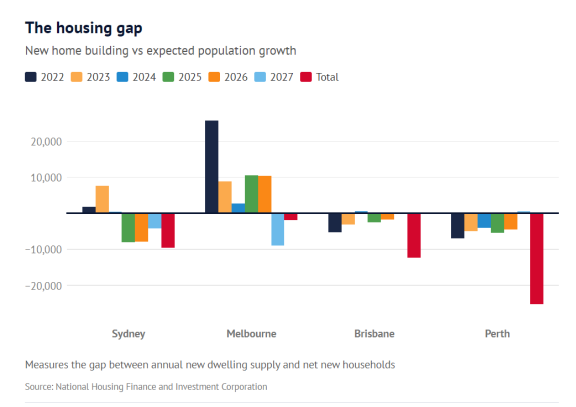
The NHFIC report says Perth already has an undersupply of 6900 homes last year, based on its current population. Based on the number of new families anticipated over the next few years, it will suffer a further shortage of 4900 homes this year, followed by 4000 properties next years, 5400 homes in 2025 and 4500 dwellings in 2026 – creating a total shortfall of 25,700 properties.
As a result, there are not enough houses for rent in WA in the private and public sectors.
In the public sector, the state government has demolished 1200 more social houses than it has built since it came to power. This has contributed to the growing state housing list and priority list with waits lasting several years even for priority applicants.
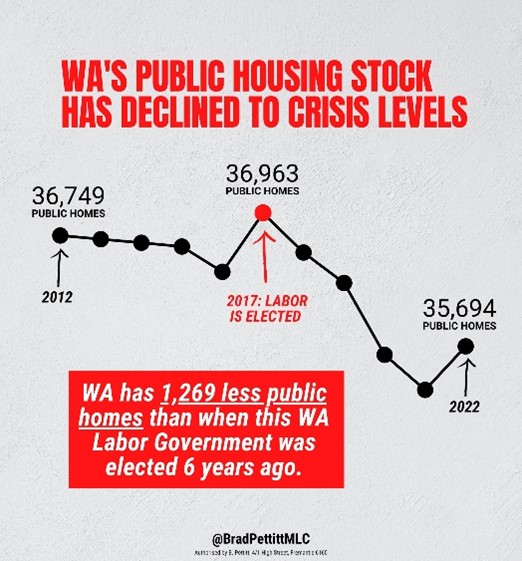
For these people, the private rental market in WA is not an alternative. Perth’s median rent hit a new milestone last month, rising to $535 per week – $15 higher than January and $85 higher than February 2022. The average Australian rent increase in the last year was even higher at 21.9% – triple the inflation rate. Rent increases of this scale are clearly unsustainable and unreasonable.
Here are some statistics that sit behind the crisis, starting with Australia-wide: There are currently 53,892 long-term rentals available and 300,000 short-term holiday rentals. In 2023, 300-400,000 new migrants are expected to arrive in 2023, about 1000 per day.
In Perth, the vacancy rate fell to just 0.4 percent in March 2023, its lowest level since 1980. Typically, a vacancy rate between 2.5 and 3.5 percent represents a balanced market.
There are currently less than 2000 properties available for rent, but there are almost 20,000 holiday rentals available in WA with about 5000 of these in Perth. To add to the challenge WA is expected to see over 20,000 migrants settle in WA in 2023.

Purchasing a house in no better with average housing costs have jumped from 3.9 times the average salary in 2000 to 6.5 times in 2010 to over 7 times now.
In high amenity central areas like Fremantle and Perth the average house costs more 10 times the average salary meaning average income earners including police, nurses and teachers are priced out of buying in many suburbs in Perth.
What can be done short term?
There is potentially much more in common across the spectrum from renters to those experiencing homelessness, to real estate agents, and even housing investors than you might think. Some of these solutions overlap strongly with Greens policy and initiatives.
Short-term cap on rental increases to no more than the inflation rate. Only short-term as long-term rent caps will discourage investment in new housing and exacerbate the problem.
Convert holiday rentals to long term. Create incentives to enable short-term rentals, including AirBnBs, to go back to long-term market through a range of carrots and sticks including charges and regulations on short-term accommodation. Many placed including Scotland have regulations on short-term rental market and WA needs to explore something similar, including taxing super-profits of these short-term rentals that come at the cost of homes for West Australians.
Extend the National Rental Affordability Scheme (NRAS). NRAS subsidizes properties rented at below-market rates but is ending in 2026. There were more than 23,000 NRAS still running at the start of this year. 6,600 properties will be exiting the NRAS scheme this year. As a result, the number of social and affordable homes available to tenants will decrease well ahead of any new supply coming online unless there are changes. There is a strong argument for an extension of NRAS to help manage the immediate gap.
Incentivize Filling our Empty houses. Australian Bureau of Statistics data from Census night in August 2021 showed 118,109 West Australian homes were unoccupied, accounting for around one in every 10 dwellings across the state. In a housing crisis, this needs to be addressed. In Portugal, apartments in high-density areas that have been vacant for more than 2 years will be compulsorily made available for rent. Forced rental to go ahead for vacant homes – The Portugal News
Get rid of the Foreign Buyers Surcharge as this idea hasn’t worked as a way of raising income and has instead seen a 90% drop in investors buying Perth properties from 1,800 to 163 and this has has a terrible impact on apartments getting built in WA. This issue was raised with me by Trent Fleskens (Managing Director of Strategic Property Group and Strategic Settlements, and host of The Perth Property Show) in which he outlines his 7 solutions to fix the WA housing crisis. I would add to this idea of getting rid of the Foreign Buyers Surcharge that for it to be waived an overseas property investor must demonstrate that the property is rented on long term market to ensure these properties don’t just sit empty.
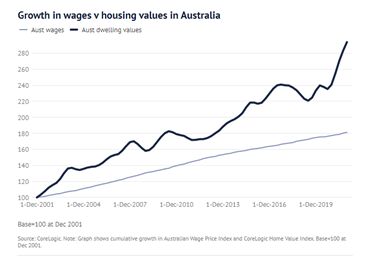
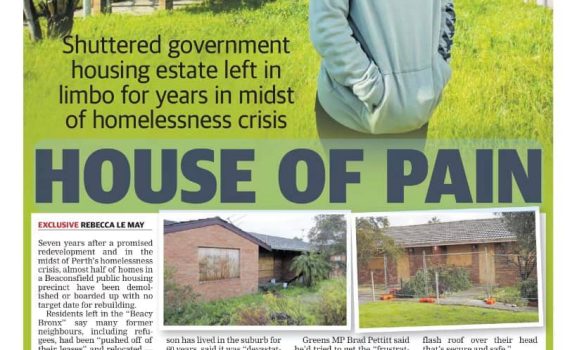

Discussion